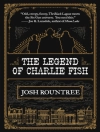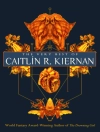In ‘The Water of the Wondrous Isles, ‘ William Morris crafts an enchanting narrative steeped in the rich traditions of both medieval romance and the mythic imagination. Set against a backdrop of fantastical islands, the novel follows the quests of its characters, particularly the brave heroine, as they navigate a world filled with magical beings and moral dilemmas. Morris’s prose combines lush descriptive language with a poetic rhythm, effectively immersing the reader in a realm where beauty and nobility reign. This allegorical tale reflects the aesthetic ideals of the Arts and Crafts Movement, emphasizing harmony with nature and the pursuit of artistic authenticity amid the Industrial Revolution’s encroachments. William Morris, a prominent figure in the late 19th-century British arts scene, was deeply influenced by his commitment to social reform and a longing for the beauty of craftsmanship. His explorations in various artistic mediums, including textiles and poetry, inform the vivid imagery and themes of idealism presented in this novel. Morris’s philosophical musings on society and nature are evident as he seeks to inspire a deeper appreciation for the wonders of the natural world and the values of chivalric virtue. This book is highly recommended for readers seeking an imaginative escape into a beautifully constructed fantasy world. Morris’s thoughtful prose and richly developed characters invite reflection on the nature of heroism and the pursuit of beauty in an increasingly industrialized society. ‘The Water of the Wondrous Isles’ is a timeless exploration of love, loyalty, and the transformative power of adventure.
About the author
William Morris (1834–1896) was a versatile and multifaceted figure in the English artistic world, renowned as a textile designer, poet, novelist, translator, and socialist activist. His contributions to the arts and crafts movement were profound, illustrating his philosophy that art should be a part of everyday life. Morris’ literary works often intertwined his socialist views with his love for medieval themes and chivalric romances, which is evident in his fantasy novel ‘The Water of the Wondrous Isles’ (1897). This particular work encapsulates Morris’ fascination with utopian societies and pastoral settings, exploring themes of adventure, heroism, and the quest for love and beauty. Morris was a prolific writer, and his other notable works include ‘The Earthly Paradise’ (1868-1870), a collection of narrative poems, and ‘News from Nowhere’ (1890), a pastoral utopian novel that envisions a future society based on common ownership and democratic control of the means of production. Morris’ distinctive literary style combines rich, archaic language and elaborate description, often mirroring the prose of the Medieval and Early Modern English periods. His influence extends beyond literature, as his designs and ideas continue to inspire contemporary art and design.












